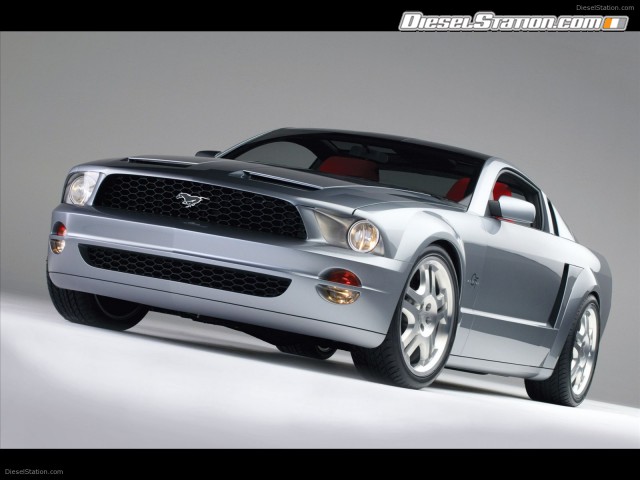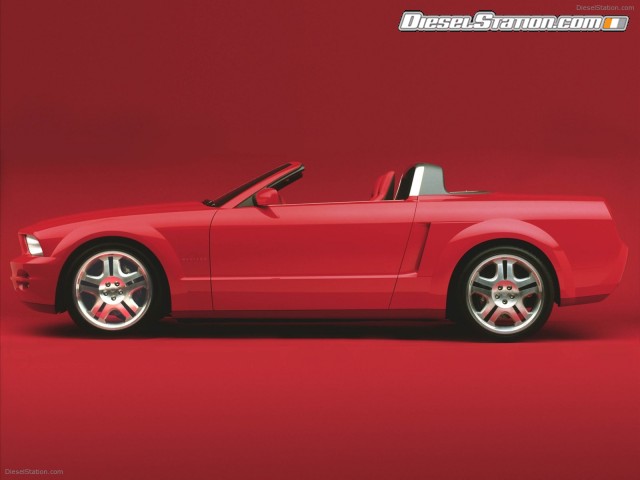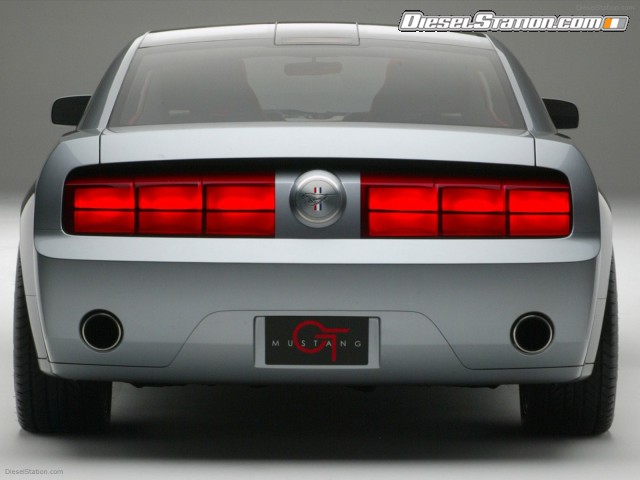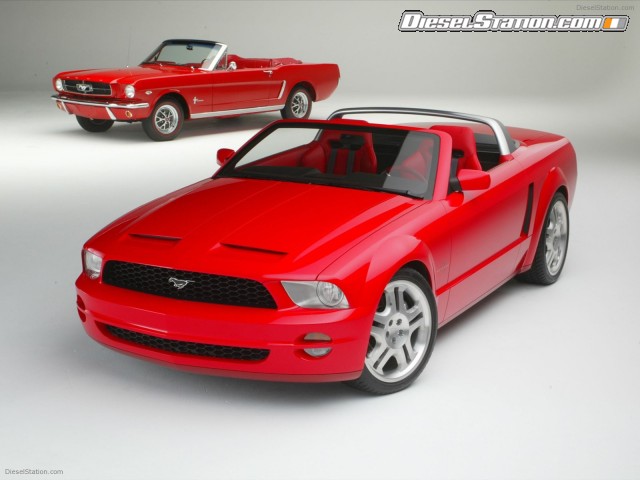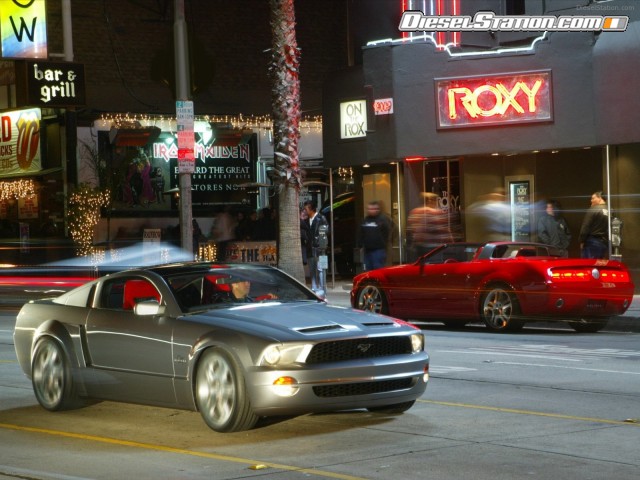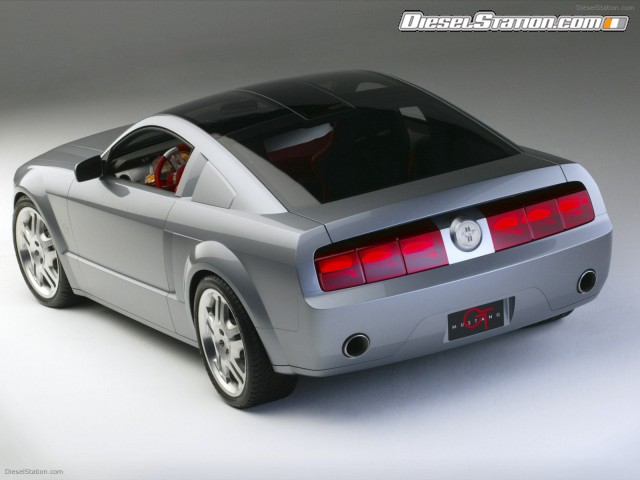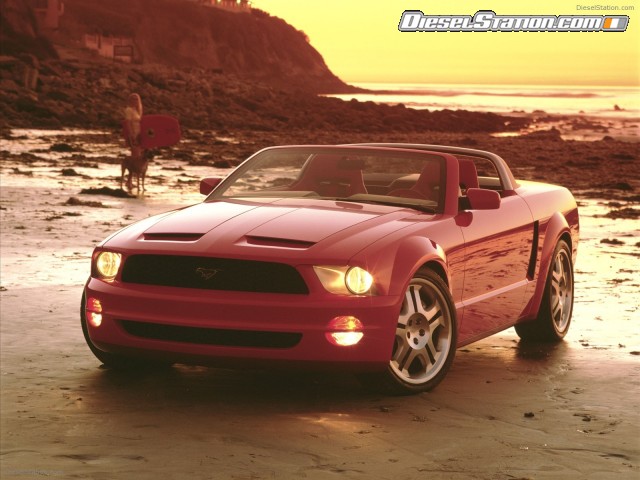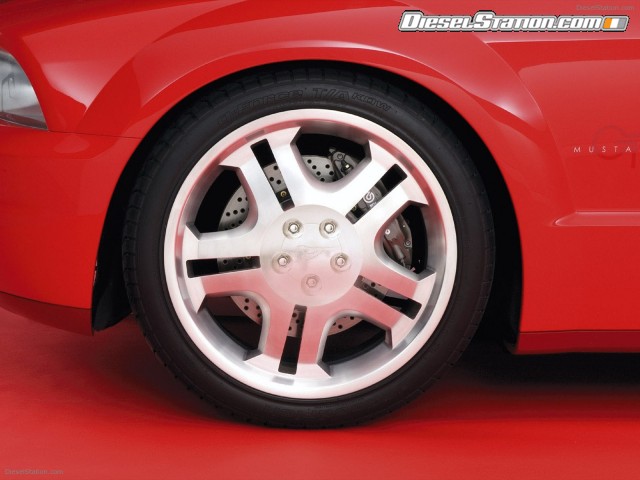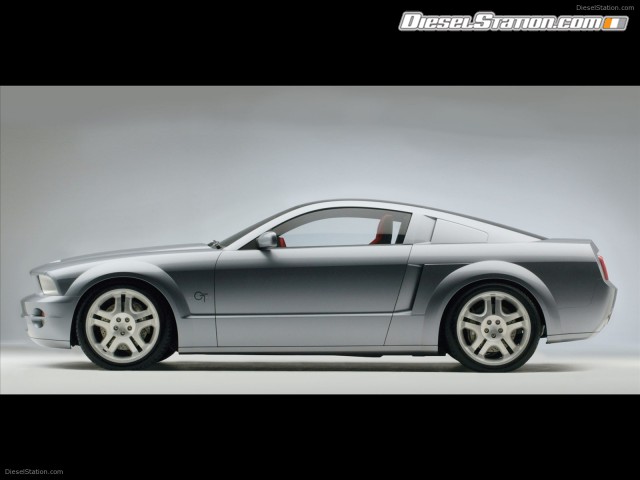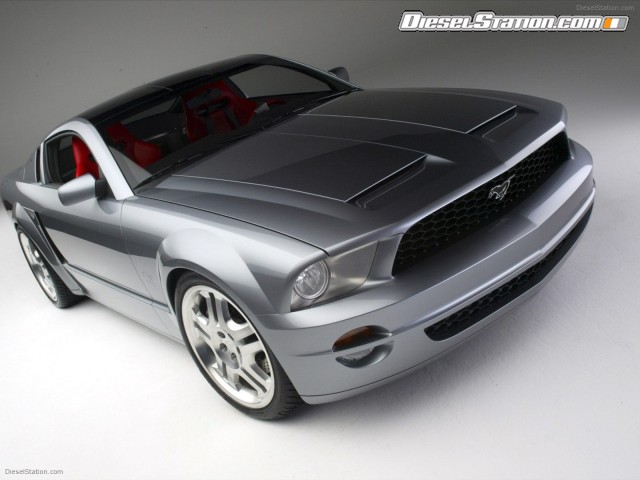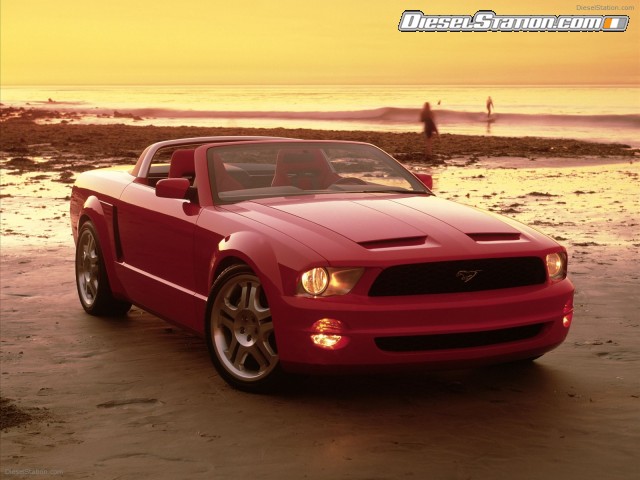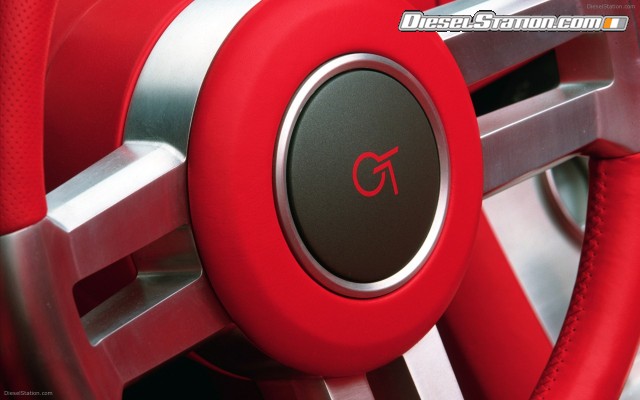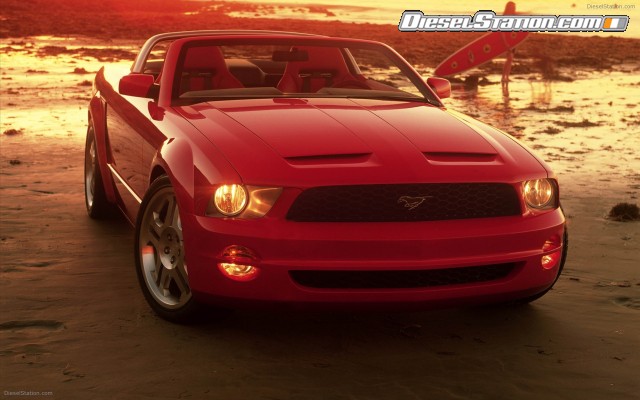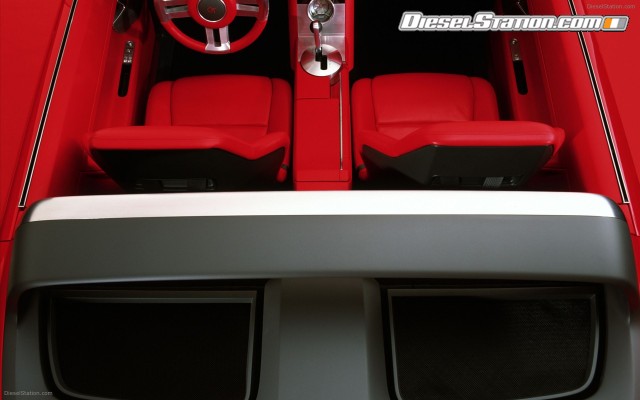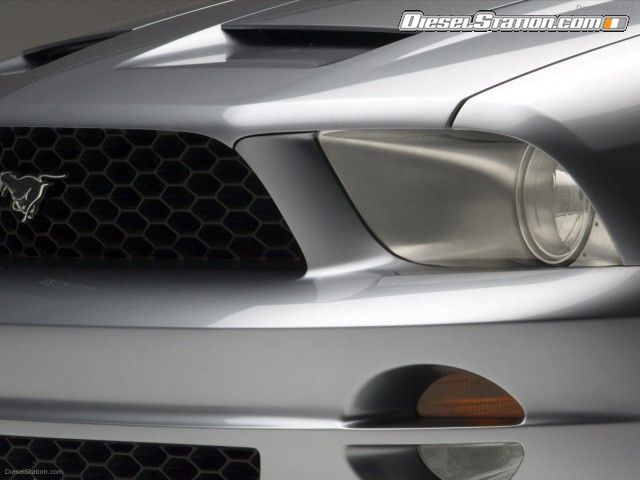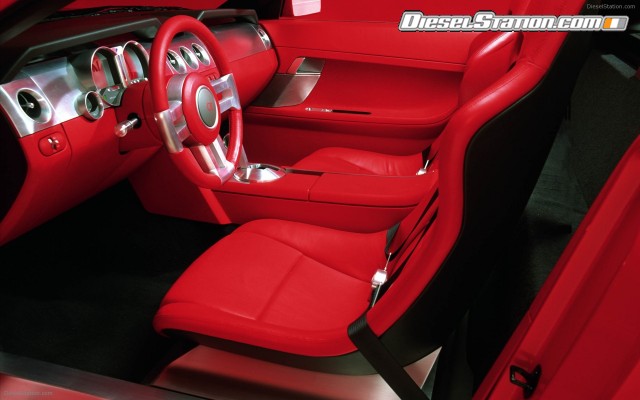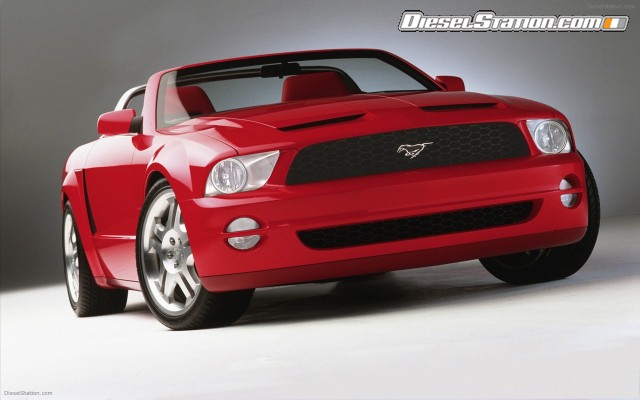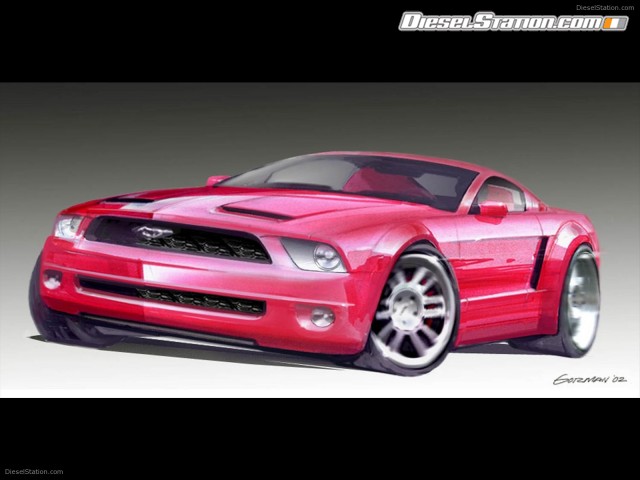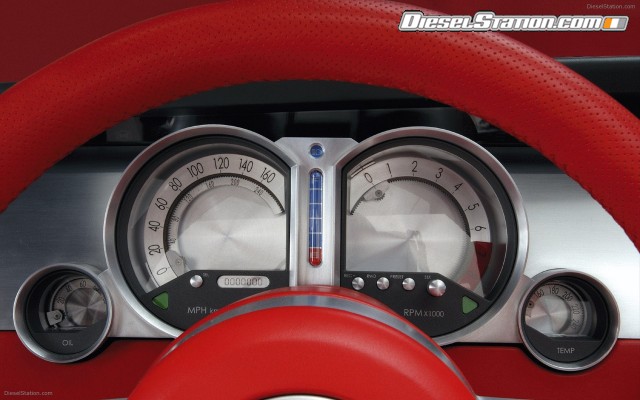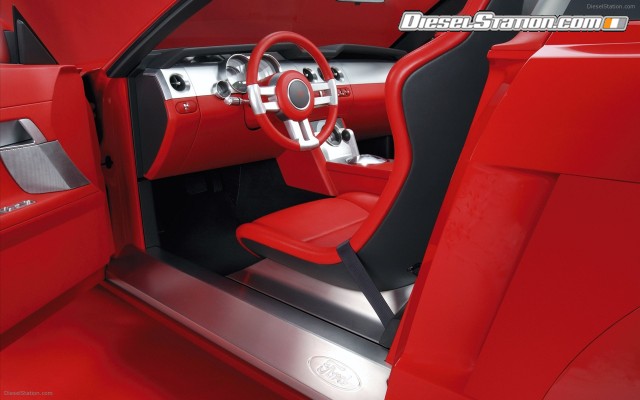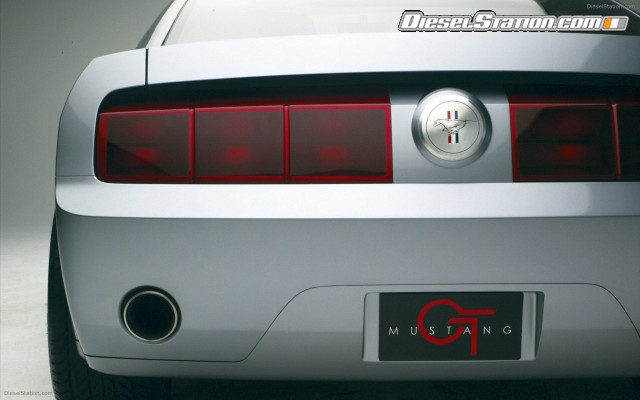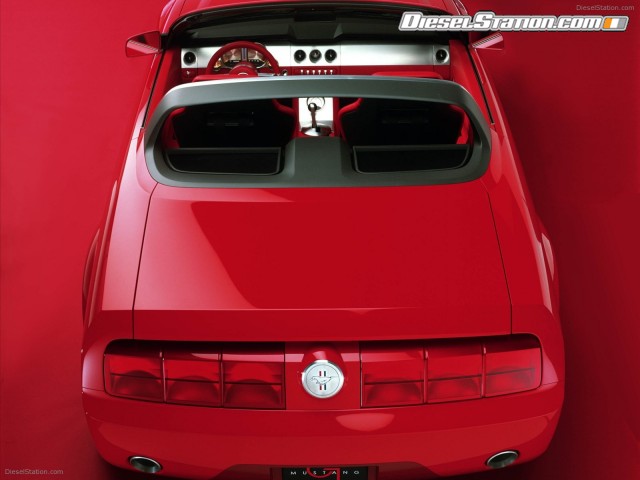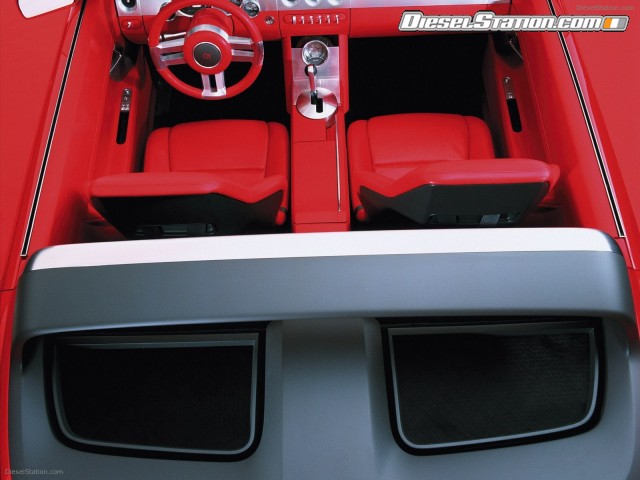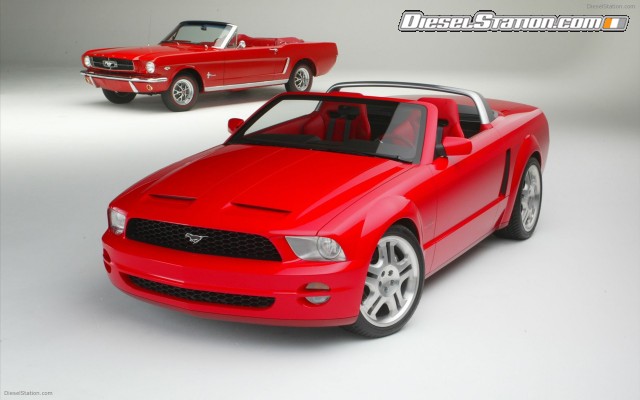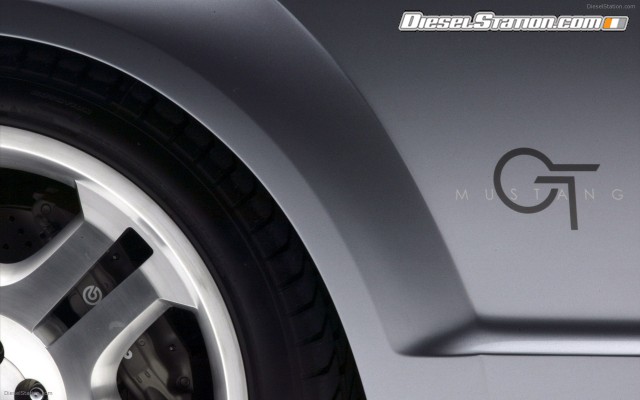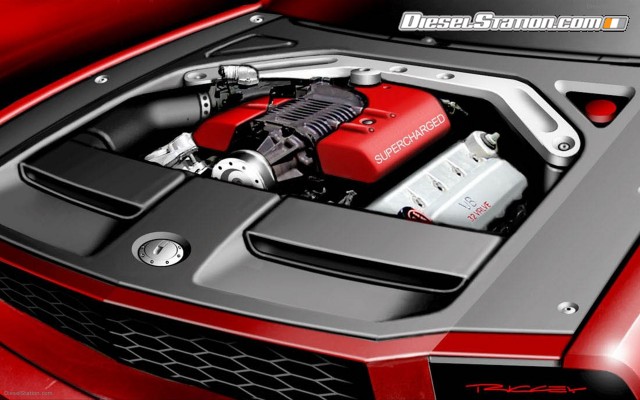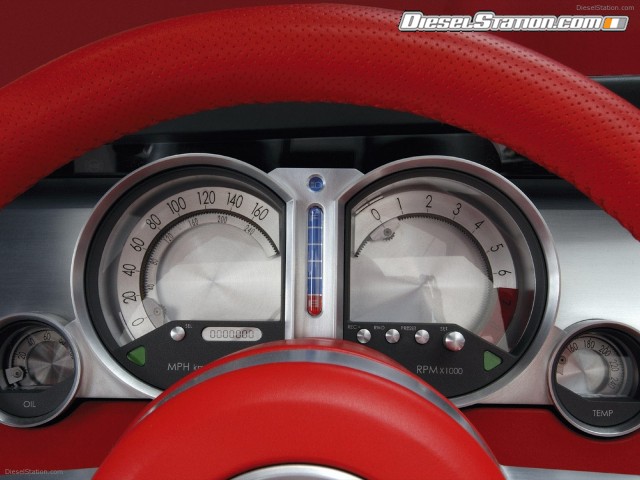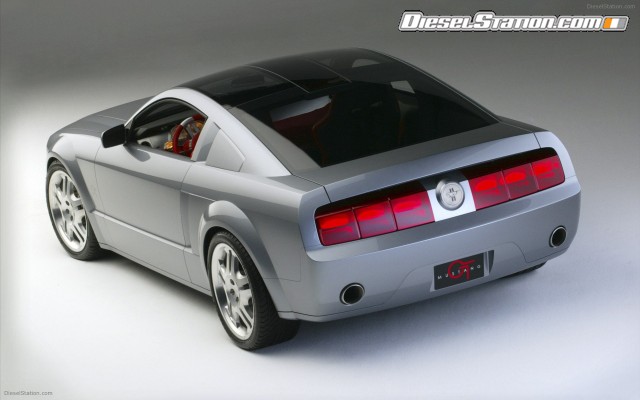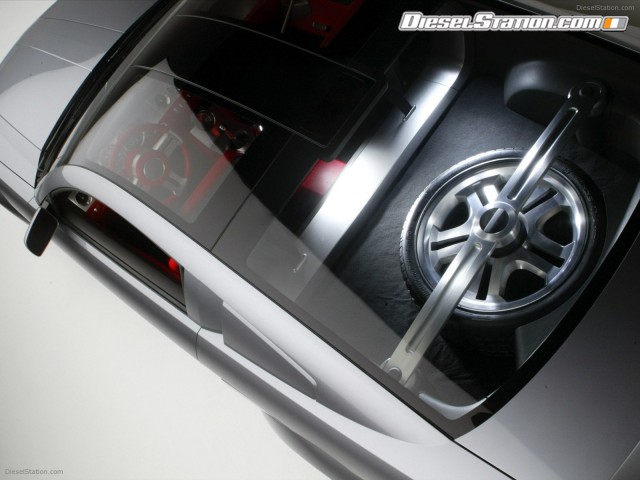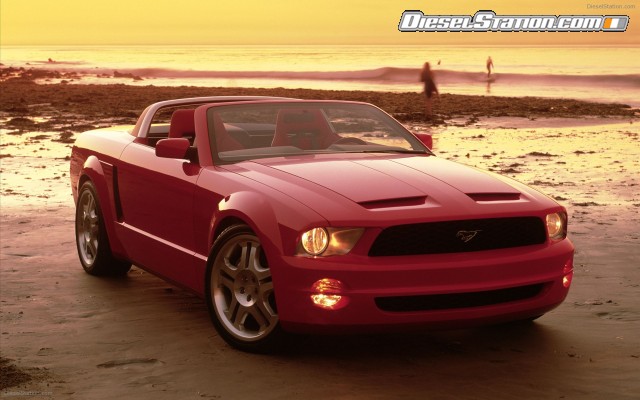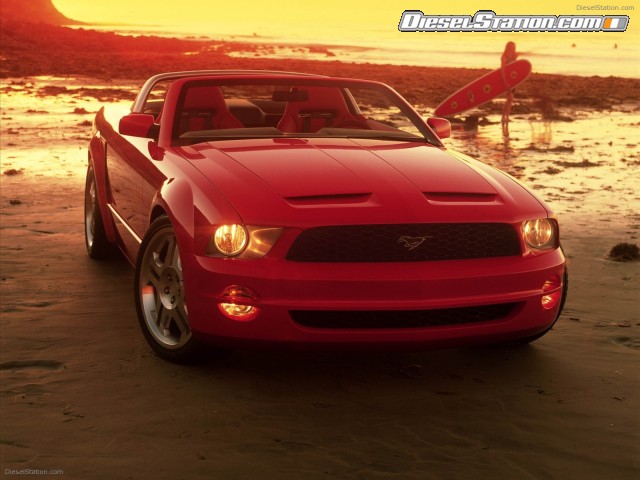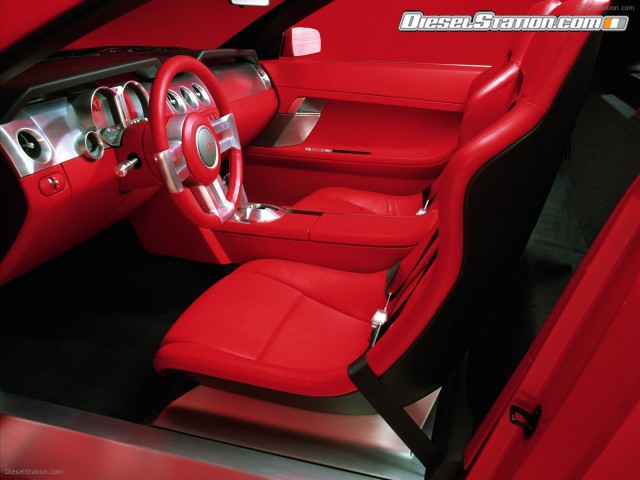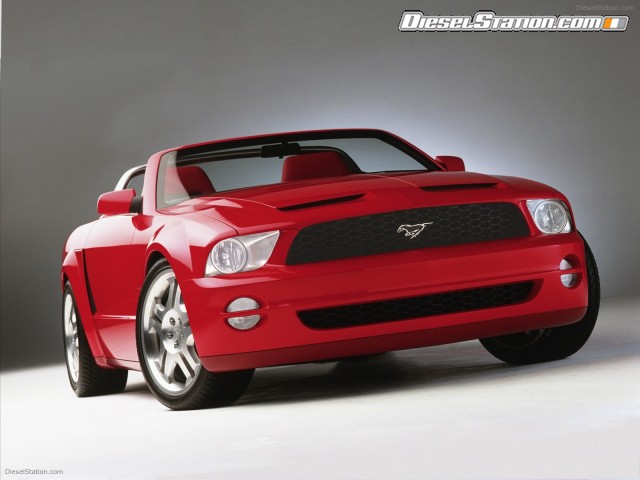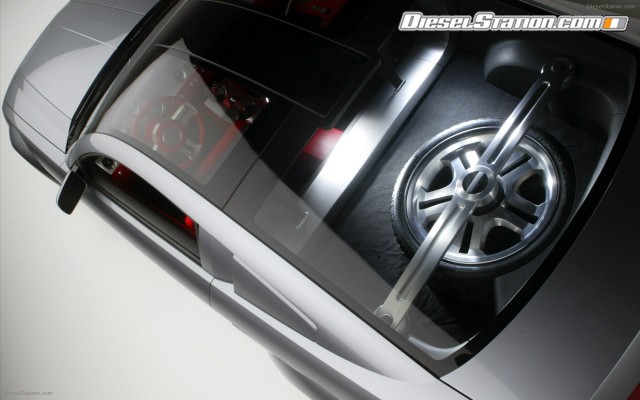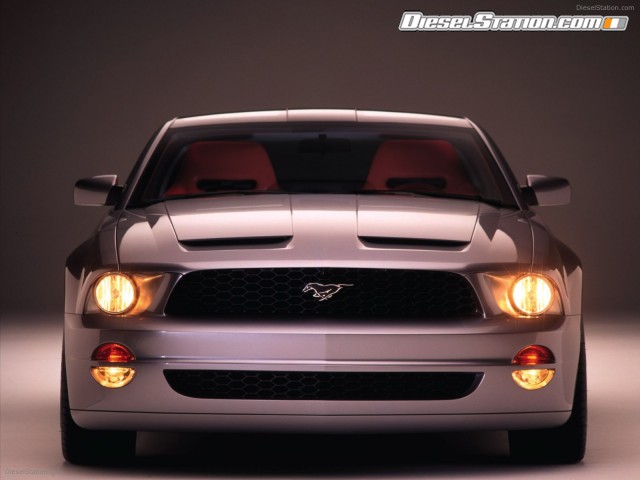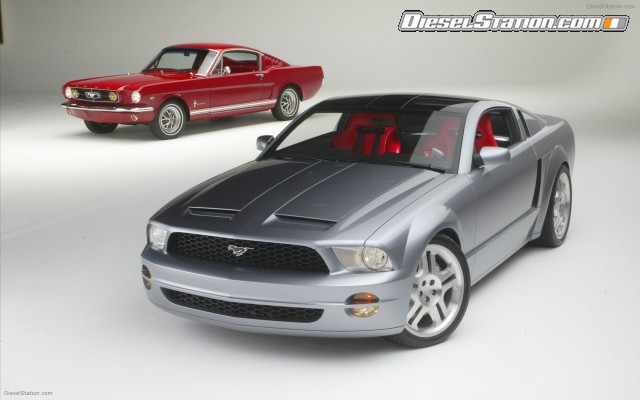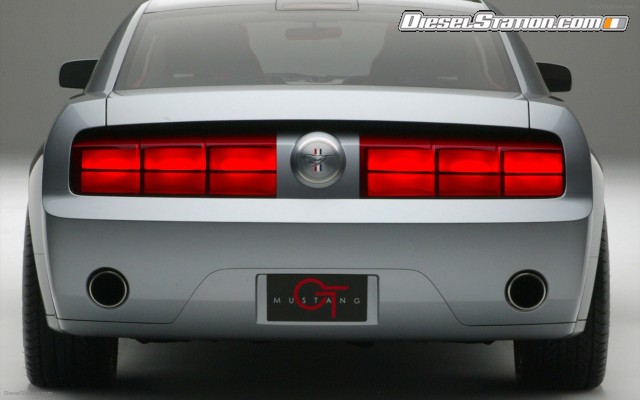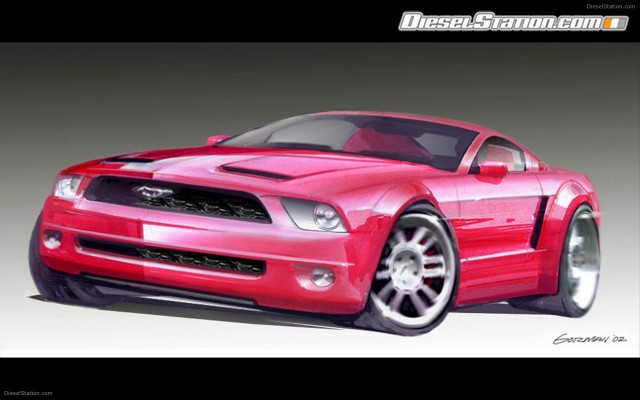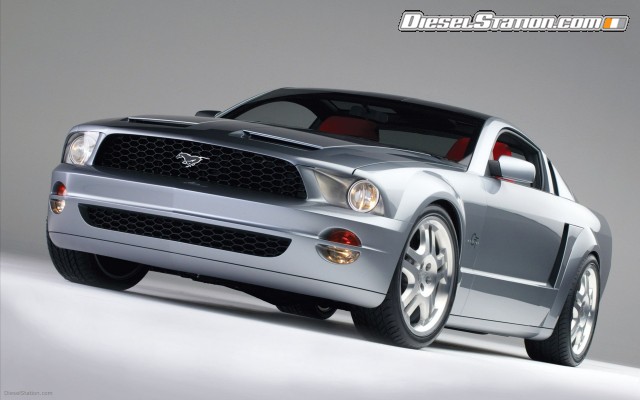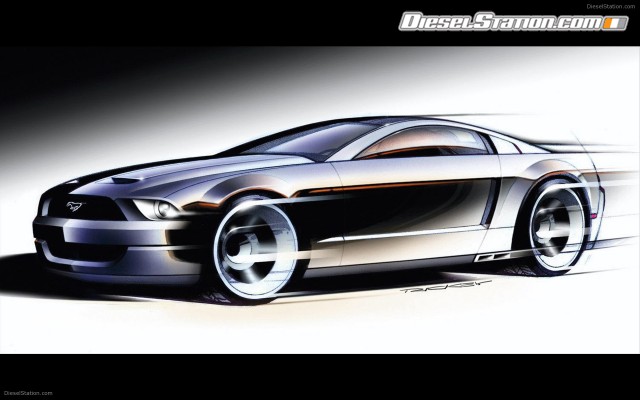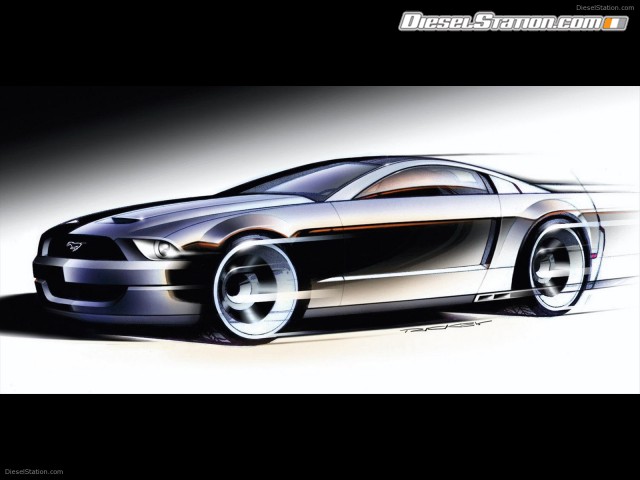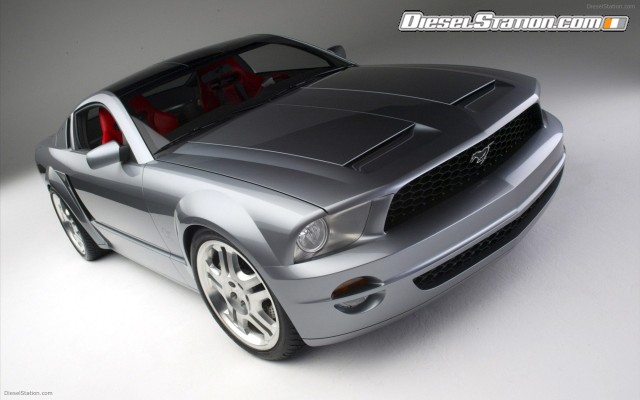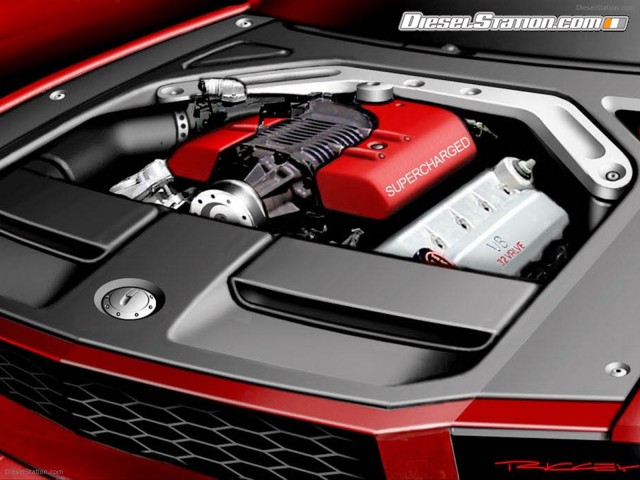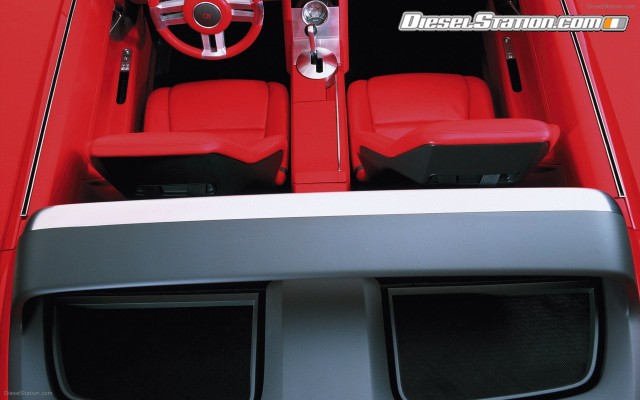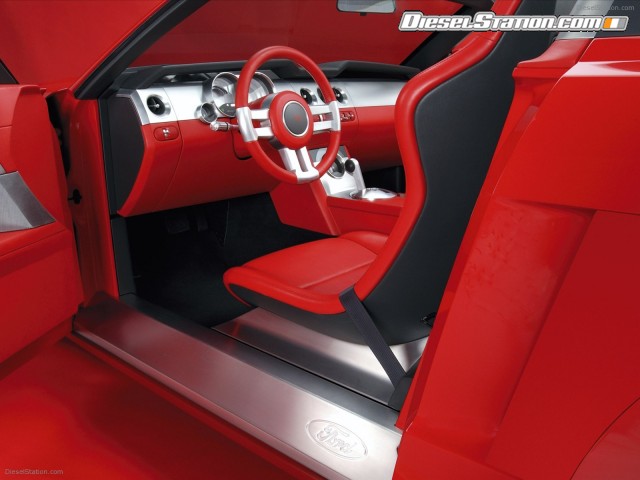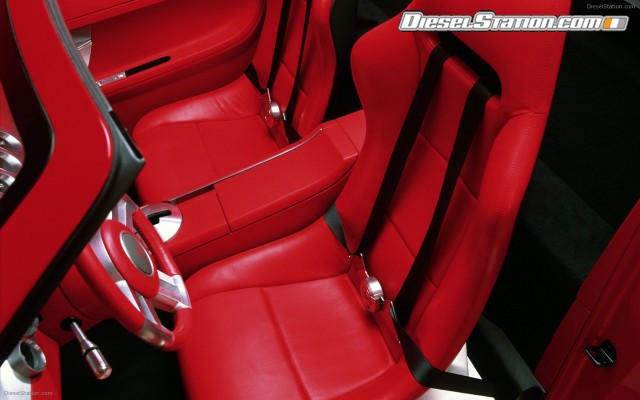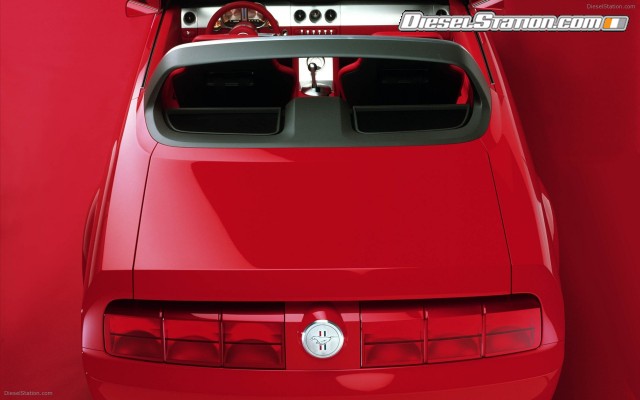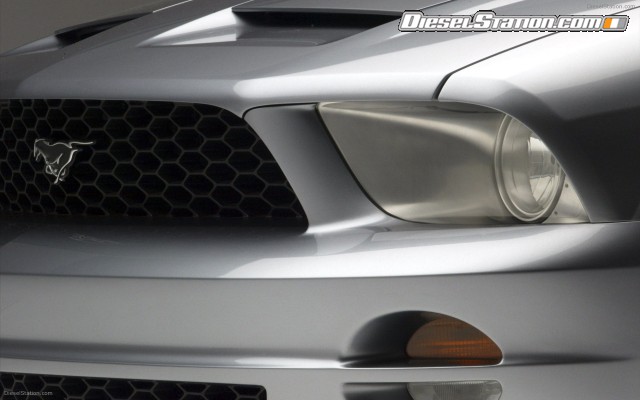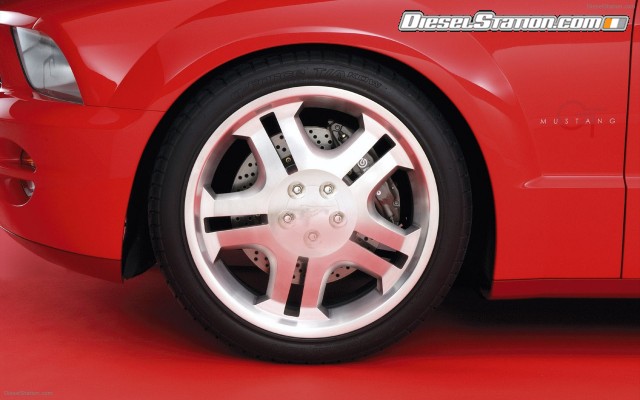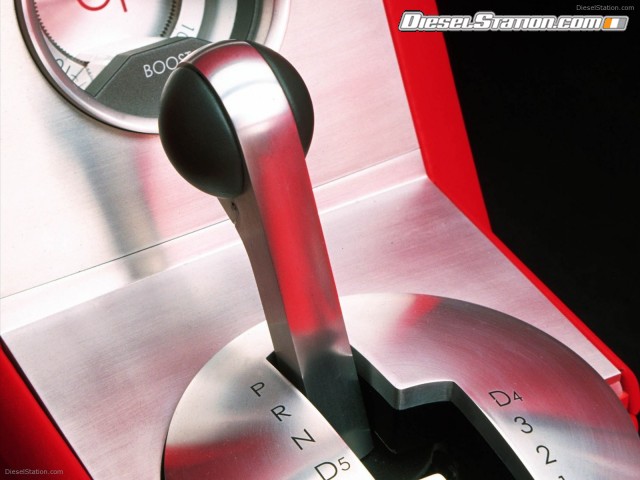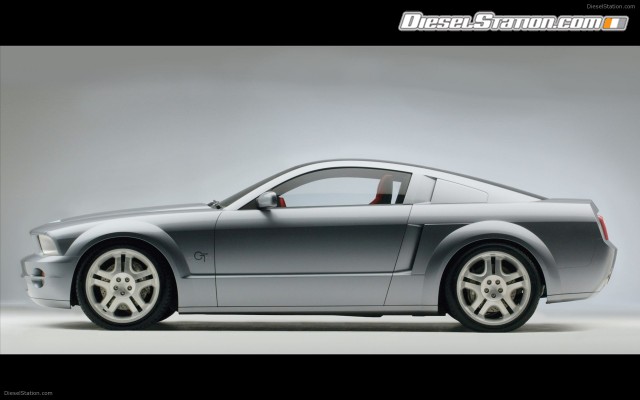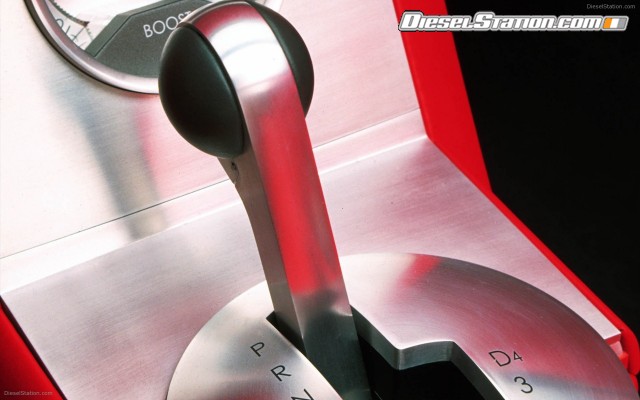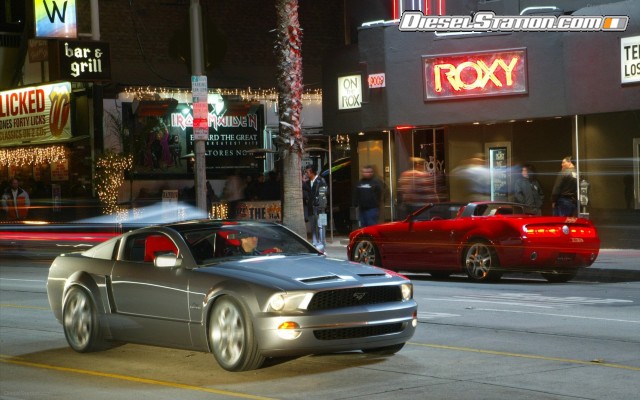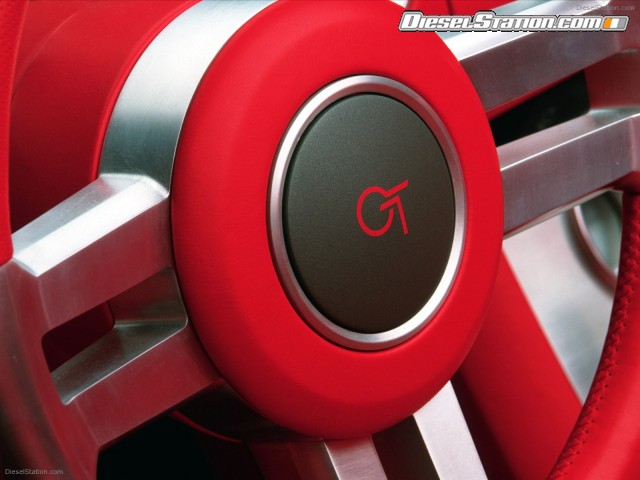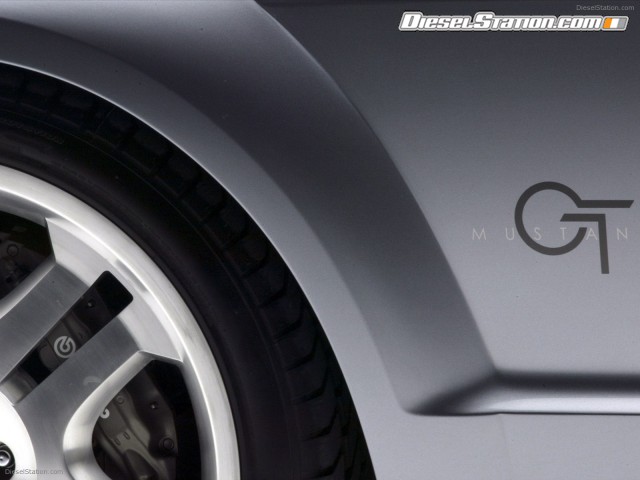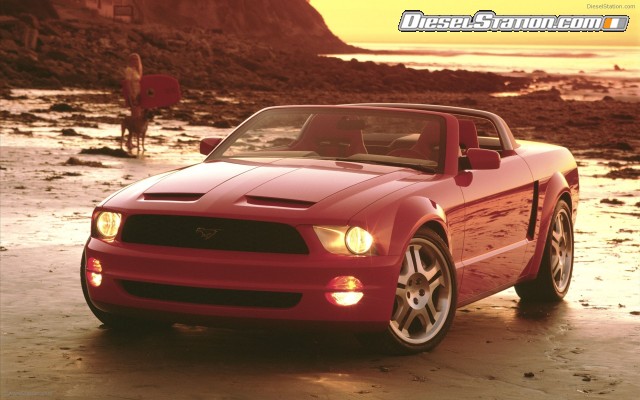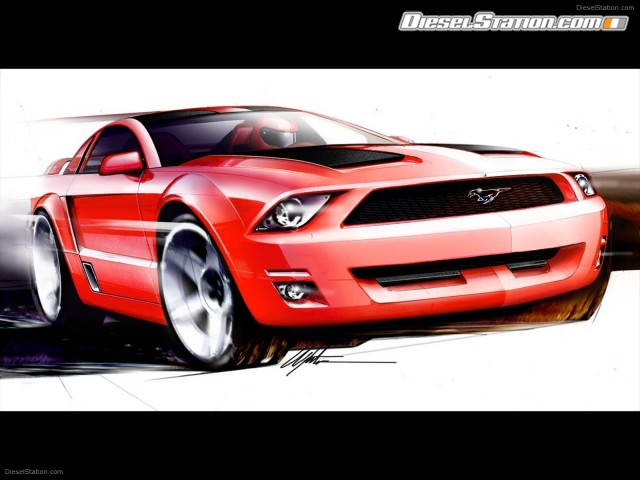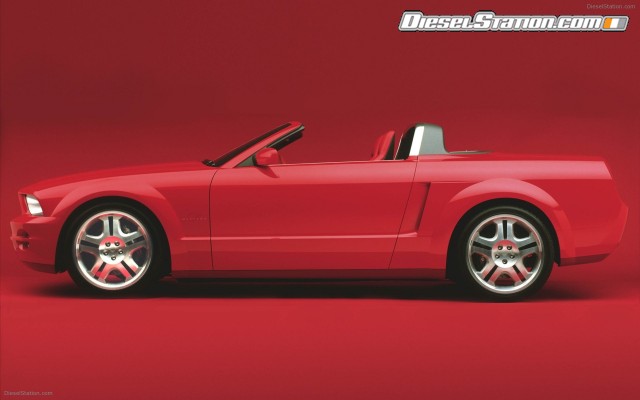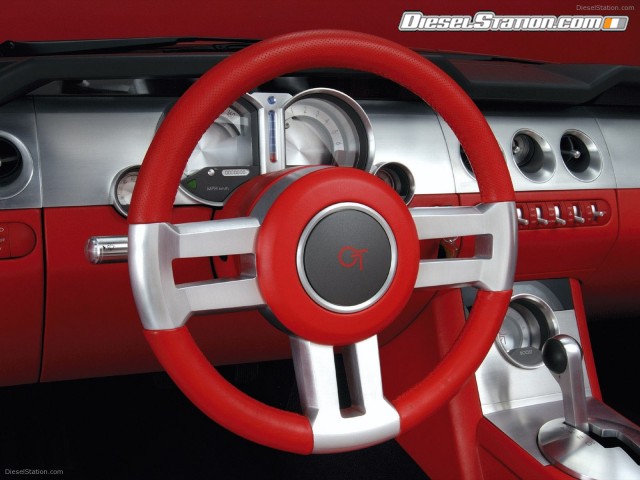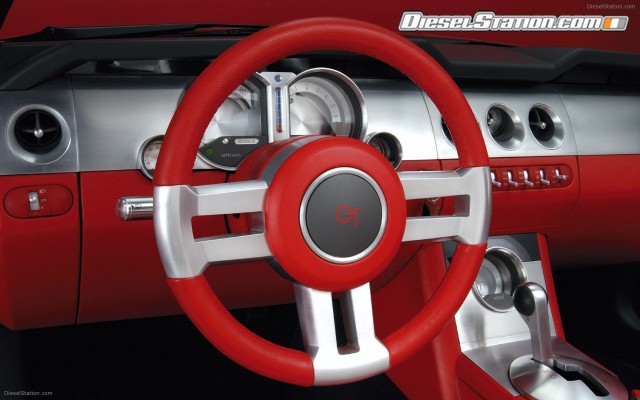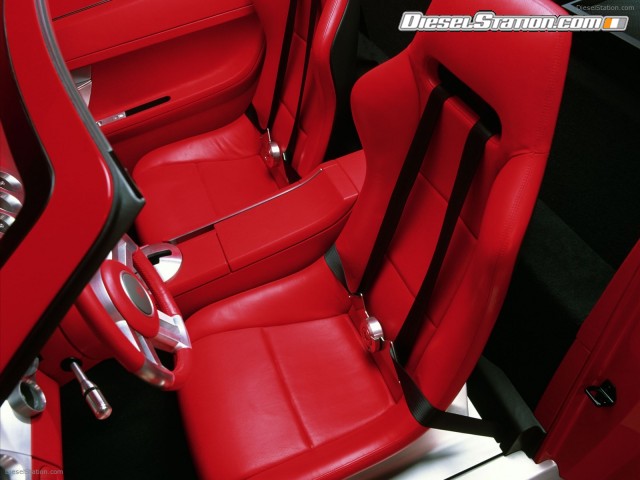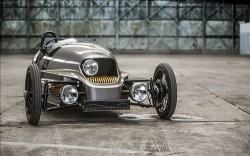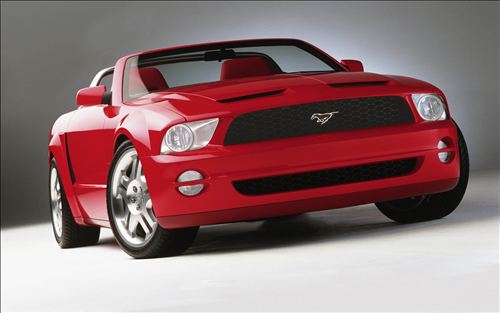The Mustang GT convertible and coupe concepts arrive ready to take enthusiasts’ breath away – three design-generations after the original made history in 1964. The latest legends of the American pony car are contemporary automobiles that capture the essence of Mustang’s design and performance heritage.
With 39 years of storied automotive history, 8 million customers and legions of fanatic fans to satisfy, Ford is introducing two all-new Mustang design concepts at the 2003 North American International Auto Show.
The Mustang GT convertible and coupe concepts arrive ready to take enthusiasts’ breath away – three design-generations after the original made history in 1964. The latest legends of the American pony car are contemporary automobiles that capture the essence of Mustang’s design and performance heritage.
Presented as a two-seat fastback coupe and convertible, the Mustang GT concepts are strong indicators of the next-generation Mustang’s design direction. They emerge as a bold testament to the timeless value that automotive enthusiasts hold for the original American pony car.
“These Mustang concepts are thoroughly modern automobiles that point to a bright future for Mustang,” says J Mays, Ford Motor Company vice president of Design. “Their powerful stances, smooth surface language and ultra-modern interiors set new standards for muscle cars. Above all, these concepts communicate the soul of Mustang: a classic, cool and quintessentially American muscle car.”
Introspective and Extroverted
The Mustang GT concepts draw on the very elements that have made Mustang the definitive American sports car for nearly four decades. Their exterior designs are clearly inspired by some of the extroverted Mustangs of the past and have been created by a design team that took an introspective approach to updating a classic design.
The designs are modern, crisp and reveal the true character of what Mustang means to so many people. The original 1964½ Mustang actually evolved from the racing-inspired, two-seat concept car called the Mustang 1. After reviewing archived files, Mustang’s modern-day crafters were struck by how the original design embraced the same inspirational cues that communicate performance. The design team looked beyond production models to the Mustang 1 concept for modern inspiration. Much like the Mustang 1 and the later Mustang Mach 1 show car in 1968, the Mustang GT concepts are rare, radical designs that will appeal to everyone.
“By melding the true character of Mustang into these fully modern offerings, we’ve ensured that even the uninitiated will instantly recognize these cars as Mustangs,” says Mays. “We went beyond their exterior designs to truly understand the extent to which Mustang has embedded itself in American culture.”
New Design
The Mustang GT concepts are instantly recognizable as Mustangs, yet they stretch the design far into the future with a distinctly modern look. Like the Mustang 1 concept, the GT concepts are two-place sportscars: one a coupe and the other a convertible. Both cars started out with a significantly modified Ford Thunderbird rear-wheel-drive architecture. The platform was sectioned to achieve the proper proportion. The front-end geometry is all original – customized to accommodate the signature Mustang MOD 4.6-liter V-8.
In concert with plans for the all-new Mustang, due in 2004, the exterior and interior designs of the Mustang GT concepts were penned by designers in Ford’s Living Legends Studio in Dearborn, Mich., and Ford’s California Design Center in Southern California. The concept design execution was done exclusively at the California Design Center.
“Getting the proportions right is the magic to making the entire design work,” says Mays.
“When you’re designing a new Mustang, you’re the steward of 40 years of automotive history. If you don’t get it right, you’ve got 8-million Mustang fans to answer to. I think we got it right,” says Mays.
The silhouette of the car is unmistakably Mustang. The coupe conjures images of 1967 and 1968 Fastbacks while the convertible brings back cues of the early Shelby Mustangs, especially in its “show bar” and wide-element tail lamps.
Inside, there’s no mistaking the no-holds-barred Mustang classic cues. The cockpit is dramatic for the driver and passenger with lush red and charcoal leather accented by billet-aluminum hardware. They’re reminiscent of another era yet, inside and out, the Mustang GT concepts are thoroughly modern.
Heritage
When the Mustang was first unveiled, Ford chose the 1964 World’s Fair in New York as its stage. A global audience sat and watched an automotive revolution roll into existence. Ford’s timing couldn’t have been better as the baby boom generation was just coming of car-buying age. The baby boomers wanted something very different from what their parents were driving. They wanted to express their own individuality. The Mustang was their answer.
The cars barely had time to relax between the production line and the showroom floor as dealers churned out more than 22,000 orders on the car’s first day on sale.
It debuted at a price of $2,368 and weighed only 2,572 pounds. With its 170-cubic-inch, six-cylinder engine, three-speed, floor-mounted manual transmission and seating for four, it offered a comfortable ride and functional appeal.
Mustang rapidly evolved into a vehicle judged by much more than just numbers. In Chicago, a dealership closed early and called police to slow the stampeding Mustang prospects while a restaurateur invited his customers to sample his “hotcakes that were selling like Mustangs.” Something special was happening.
One million were sold by March 1966. They were parked in everyone’s driveway, but Ford was most excited about those people eagerly awaiting their first driver’s license. They wanted their cars to be different and Mustang delivered.
The 1964½ model was the patriarch of subsequent changes to hoods, interiors, headlamps and spoilers. As Mustang weaved in and out of different generations, the vehicle generated an iconic status. Running alongside the best European road cars, it soon became a racing-inspired legend.
Mustang needed racing as much as racing needed Mustang. Right out of the blocks, the pony car was a champion, taking both first and second place in the 1964 Tour de France International rally. By the end of the sixties, Mustang led the SCCA Trans-Am series.
Body styles and engine sizes changed throughout the decade. By 1969, the Mustang offered major style changes, a roomier and more luxurious interior and even more power. To performance enthusiasts, 1969 meant Mach 1, Boss 429 and Boss 302.
Throughout the seventies and eighties, Mustang evolved from a stocky and imposing-looking machine to a vehicle with clean and crisp lines. The 1979 Mustang design wound up running a full 15 model years thanks in part to its performance roots. In 1987, the basic design became truly slick with a smoother nose, flush headlamps and black body trim, and in 1989, Mustang celebrated its 25th birthday and received another successful facelift.
Dramatically restyled and churning with power, the 1994 Mustang got a performance pump from Ford’s Special Vehicle Team (the second-generation SVT Cobra) and was sold to customers with the slogan “It is what it was.” The rest of the decade molded the Mustang into a vehicle that mingled nostalgia with new lines and curves…and, of course, more power.
The last major redesign of the Mustang came three years ago. Since then, the company has continually kept customer’s excitement with special interest models like the Mustang Cobra, Cobra R racing edition and the Mustang Bullitt GT. For 2003, the Mustang Mach I returned replete with the “shaker” hood scoop and more than 300 horsepower.





